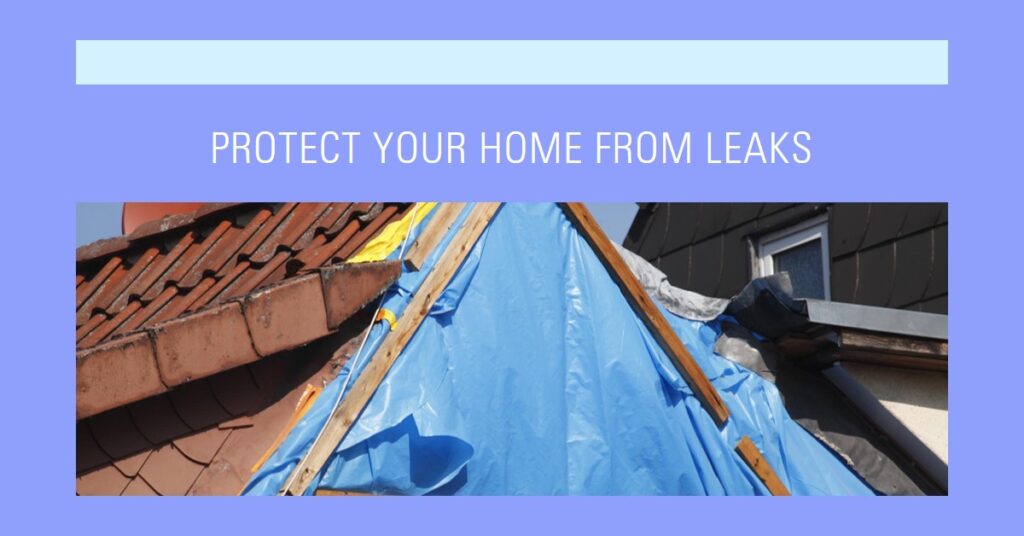Leak Locations highlight the most susceptible areas of your roof to potential damage, and spotting these weak points early, such as through ceiling water stains, peeling paint, or mold and mildew, can prevent costly repairs.
By swiftly identifying and addressing these signs, homeowners can prevent more extensive and costly damage.
Early Indicators of Roof Leaks
Recognizing the early indicators of roof leaks can be the difference between a simple fix and extensive, costly repairs.
Understanding what to look out for can ensure the longevity and health of your roof.
Roof-Related Visible Signs Indoors
The first and most noticeable sign of a potential roof leak is ceiling water stains. These appear as uneven, darkened spots on your ceiling, signaling water infiltration.
Another indicator, especially near the tops of walls, is peeling paint.
This peeling is often due to moisture buildup behind the color. Furthermore, mold or mildew, especially in corners or less ventilated parts of your home, can hint at consistent moisture entry, often due to a roof leak.
Signs On The Roof Itself
Directly observing the roof can also reveal significant leak indicators. Damaged or missing shingles expose the underlayment, increasing vulnerability to water infiltration.
Pooling water, especially after a rainstorm, suggests poor drainage and can lead to leaks over time.
Lastly, clogged gutters, filled with debris like leaves and twigs, can cause water to back up and seep under the roofing material, leading to potential leaks.
Identifying Leak Hotspots on Your Roof
The longevity and efficiency of a roof significantly depend on a homeowner’s ability to identify potential weak spots.
These vulnerable areas, often unseen or overlooked, can lead to significant damage when neglected.
By understanding and addressing these issues, homeowners can ensure that their roofs remain sturdy and protective for years.
Below, we delve into the most common roof areas prone to leaks and how to safeguard them.
Valleys: The Rainwater Reservoirs
Valleys are natural channels directing rainwater downwards, or the architectural dips formed where two roof slopes intersect.
However, their design sometimes allows water to pool, leading to potential leaks over time.
Often made of metal, flashing is used in these valleys to create a watertight barrier, steering away water and preventing damage.
Joints and Penetrations: Intricate Intersection Points
Joints and penetrations are integral to a roof’s design but can be a hotbed for leaks.
Joints are where two roof sections meet, while penetrations refer to areas intersecting with chimneys, vents, or skylights. The seams or gaps in these areas can allow water penetration.
To avoid this situation., flashing is strategically placed around these areas, acting as a barrier and redirecting water.
Roof Edges: Where Wildfires and Water Meet
One might overlook the edges of a roof, but they can be surprisingly vulnerable.
Threatened by external elements, such as wildfires, when debris fills rain gutters or when there are gaps in the roofing, these edges become potential leak sites.
Ensuring a protective metal drip edge and keeping gutters clean can mitigate these risks.
Skylights: The Beauty and the Vulnerability
While skylights beautify and bring natural light into a home, they come with challenges.
Debris accumulation around skylights can lead to water pooling, causing leaks and potential structural damage if not addressed.
Flashing and encircling the skylights ensures their functionality remains uncompromised.
Chimneys: Standing Tall but Not Always Dry
Chimneys, while majestic, have their vulnerable points, particularly where they intersect with the roof.
Rainwater, Instead of being diverted or redirected elsewhere., can seep into crevices at these intersections.
Flashing around the chimney’s base ensures this intersection remains leak-free.
Wrapping It Up: The Roof’s Guardian Spots
Roofs, being the primary defense against external elements, have their set of vulnerabilities.
Recognizing these vulnerable spots – valleys, joints, edges, skylights, and chimneys – is the cornerstone of effective roof maintenance.
With this knowledge, homeowners can take proactive steps, ensuring their roofs remain leak-free, durable, and robust for years.
